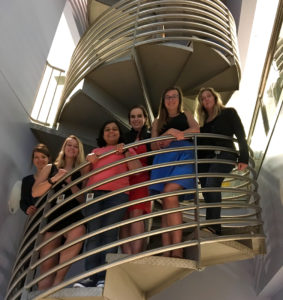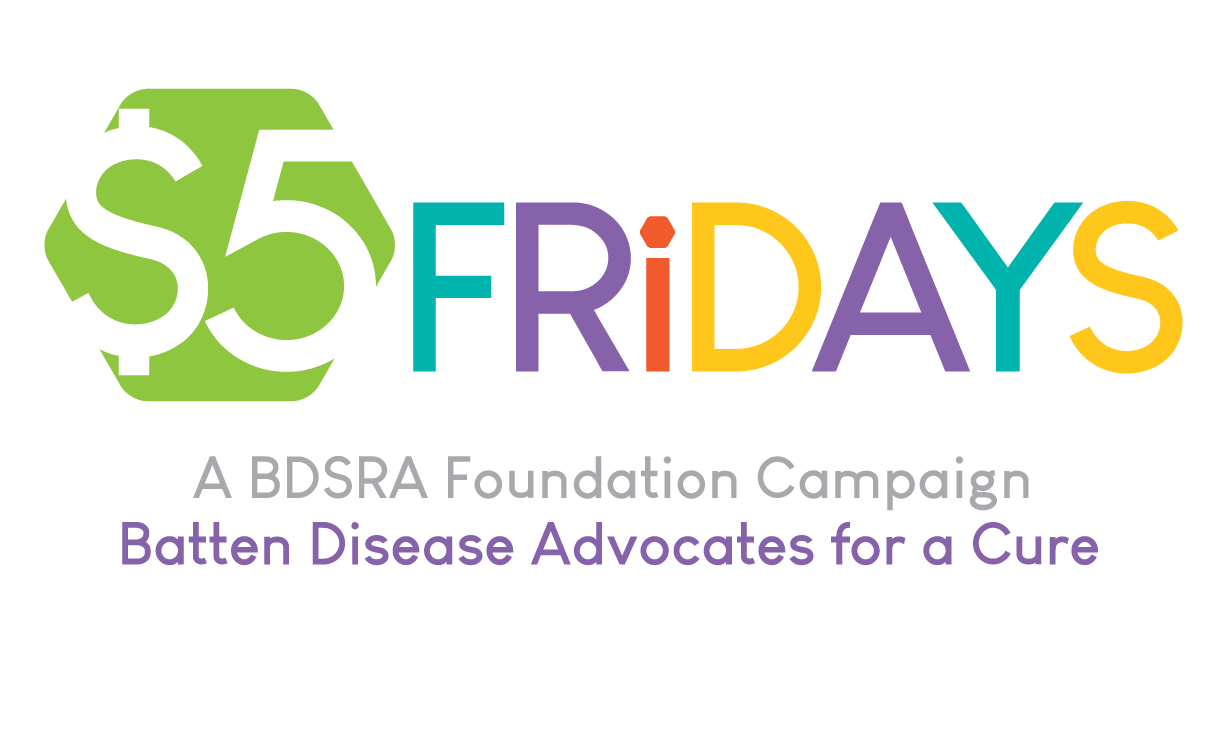 This month we are excited to highlight the work being done by Sue Cotman Ph.D. and Cotman Lab!
This month we are excited to highlight the work being done by Sue Cotman Ph.D. and Cotman Lab!
Dr. Cotman, what is your current position?
Assistant Professor of Neurology, Massachusetts General Hospital, Harvard Medical School
How did you get involved with Batten Disease research?
My PhD thesis research project involved investigation of a potentially important player in the development of Alzheimer’s disease. Through this work, I developed a passion for understanding how the brain works and drives human behavior and for solving diseases of the brain. Therefore, after earning my PhD, I set out to further pursue a research career in brain disease, joining the laboratory of Dr. Marcy MacDonald at Massachusetts General Hospital and Harvard Medical School. Dr. MacDonald had been working with Dr. Terry Lerner for several years, to identify the Batten disease related CLN3 and CLN6 genes. Dr. MacDonald provided superb mentorship and allowed me to have a lot of independence while building on Dr. Lerner’s work, fully developing and characterizing several CLN3 model systems that are now widely used throughout the international research community today. I have been fortunate to continue expanding on this strong tradition of Batten research at MGH, leading a talented team in my research laboratory, and working with our clinicians, the Batten patient and advocacy communities, and helping to bring a number of new investigators into the field as collaborators. Together, we have made important discoveries about Batten disease, and we have developed many additional model systems and reagents for multiple genetic forms of Batten disease, making these resources available to the international research community. My laboratory, located within the Center for Genomic Medicine (formerly the Center for Human Genetic Research) at MGH, continues to primarily focus our research efforts on improving our understanding of the molecular basis of Batten disease and on the identification and further development of potential Batten therapies.
Could you introduce us to the members of your lab?
Uma Chandrachud, Ph.D., Research Scientist
I started working on lysosomal storage disorders in 2010, when I started working as a postdoc at MGH/Harvard Medical School at the Center for Human Genetic Research (now Center for Genomic Medicine). Initially, I worked on MLIV (Mucolipidosis type IV), generating and characterizing cell lines from Mucolipin knockout mice, under the guidance of Dr. Susan Cotman as she had expertise generating similar cell lines from Cln3 mice. I got interested in learning more about the defects in the autophagy pathway in both the disorders, and shifted my research focus more towards Batten disease. Along with dissecting the defective autophagy pathway in the Cln3 model system I have also been interested in understanding and knowing more about the sub cellular localization of CLN3 protein and improving methods for its biochemical analysis. I am also interested in developing stem cell model systems to study CLN3 and other forms of Batten disease. I enjoy having great discussions with Dr. Cotman regarding our research, she has been a great mentor and it makes me highly motivated to learn more about CLN3. Recently I have transitioned to the role of Research Scientist in the Cotman lab, and I will continue to work on CLN3 and will help oversee several additional Batten related projects in our lab.
Anna-Lena Hillje, Ph.D., Postdoctoral Research Fellow
I have a strong background in Parkinson’s Disease and a particular interest in the genetic and pathophysiologic overlap of different forms of lysosomal storage disorders. Last year, I received an INTER Mobility grant from the National Research Fund Luxembourg, which enabled me to join the lab of Prof. Susan Cotman. She is an expert in NCL and my research stay in her lab is an exciting opportunity for me to learn more about this lysosomal storage disorder. I am very glad about her guidance and support and the chance to learn from her as a scientist and mentor. Discussions with her and her lab members are always very enriching, inspiring and motivating. In order to get a better understanding of shared pathological alterations of NCL and Parkinson’s Disease, I am utilizing human induced pluripotent stem cells (hiPSC) to model both diseases. My work is carried out in close collaboration with Prof. Jens Schwamborn from the Luxembourgish Center for Systems Biomedicine which is part of the University of Luxembourg. His laboratory has a strong focus on Parkinson’s Disease.
Ursula Ilo, M.Sc., Visiting Scientist
I am visiting Dr. Cotman´s lab for a year as a recipient of a Baltic-American Freedom Foundation Scholar Award, through the Council on International Educational Exchange. My research in the lab has focused on the application of next generation genomics to lysosomal and metabolic disease and also on CLN2 cellular disease models. This year has been a valuable and exciting experience and given me an insight to the complicated yet extremely interesting field of different NCLs. Dr. Cotman and all the people in the lab are extremely focused and inspiring and it has been a privilege to work with them.
Madeleine Klein, Research Technician
I began working in the Cotman lab as a summer student during college. I’ve always had an interest in rare genetic disorders and enjoyed my first summer so much that I came back the next summer to continue helping out. I then joined the lab full time after graduation in 2016 and am eager to continue learning about new areas and methods of research being used to study Batten disease. I have enjoyed watching our projects develop through the years and am particularly excited about our current research on characterizing and treating disease features that are observed in CLN3 cells. I plan on pursuing both medical and graduate degrees and look forward to continuing to use basic science as a direct path towards a treatment of rare and debilitating disorders.
Abigail Nowell, Research Technician
Over the past year and half, I have been working as a technician in the Cotman lab overseeing the maintenance of our mouse colonies. The focus of my work has been on developing mouse genetic crosses in order to better understand the mechanisms and progression of the disease, and to identify factors that alter the disease, since these may help us find effective disease treatments. Contributing to this work has been very exciting given the strong foreseeable impact on the patient community.
What are a few key milestones in the last 5 years that were fruitful to knowing what we know now about Batten Disease?
2012: Identification of mutations in the gene known as KCTD7 (CLN14) in a family with infantile onset NCL; This was reported in American Journal of Human Genetics in 2012, and it was one of several reports within 2012 that demonstrated the successful use of ‘exome sequencing’ to uncover the causal genes in previously undiagnosed Batten families. A consortium of many of the investigators involved in these studies was subsequently formed, first meeting together in the same calendar year at The 14th international Conference on NCL/Batten Disease in London, UK. The first publication of the genetics consortia has recently appeared in the journal, Neurology (Berkovic et al., Neurology 2016, v87 pp579-584), which reports on the diagnosis and misdiagnosis of adult NCL/Batten disease.
2014: My research team led efforts to develop the first induced pluripotent stem cell models for CLN2 and CLN3 disease (iPS cells), which were reported in 2014 in the journal, Human Molecular Genetics (Lojewski et al., Hum Mol Genet, 2014 v23 pp 2005-2022). These are stem cells that are “reprogrammed” from a patient’s skin cells, and they are important because they can be turned into the cell types most relevant to the clinical disease (for example, brain cells). Many researchers believe that these cells are critical to the development and validation of candidate disease therapies, since they come from human patients themselves and therefore should provide important insights to efficacy in humans.
2015: My research team used one of our previously developed CLN3 brain cell models to screen for disease modifying drugs, which was reported in the Journal of Biological Chemistry (Chandrachud et al., J Biol Chem, 2015 v290 pp 14361-14380). Importantly, this research, where we also teamed up with Dr. Emyr Lloyd-Evans and his research group, led to the identification of disrupted cellular calcium levels in the organelle known as the lysosome when CLN3 function was lost. This has contributed to new research focused on uncovering CLN3 protein function in the lysosome and to new ideas for developing potential CLN3 disease treatments.
2016: I was the Lead organizer of the 15th International Conference on NCL/Batten Disease, Boston, MA, the most recent international scientific conference on the Batten disorders, which successfully hosted over 230 attendees from academia, private industry, patient advocacy groups and research foundations, and governmental funding agencies.
What do you find exciting or promising about research that is moving forward?
The successes in clinical development of enzyme replacement therapy for CLN2 are extremely exciting because it is paving the way for future treatment options and clinical trial design for Batten disease. It is also an inspiring demonstration of the importance of teamwork across the various stakeholders.
The developments in gene therapy are very exciting because the technology has really advanced and because the approach, if successful, recovers the primary thing lost in the disease— a healthy gene is provided in the cells that are treated. While significant challenges remain in fully developing this approach clinically, dramatic progress has been made in recent years.
The developments of new types of disease models (for example, large animal models, new types and a growing collection of human stem cell models), and applying ‘big data’ approaches to studying them and to studying patient samples, are also very exciting because this progress is critical in the early-stage development of candidate treatments and disease biomarkers. Many new drug targets are emerging from the exciting research that is taking place around the world, but demonstrating pre-clinical success in the models closest to humans will be important to assist in prioritizing treatments that move forward to clinical testing in patients.
Basic research remains extremely important because we don’t yet know the primary functions of many of the Batten disease related gene products. There are some exciting developments providing new clues to protein function that will undoubtedly help researchers identify early-stage targets for therapy development. The targets that are most closely linked to the lost protein function have the greatest promise of success.
Where could our families, researchers, physicians, and other community members see you talking about your research this year?
We will attend the annual BDSRA family conference this coming July, where we will present our work in poster format, and we will informally discuss our work with the families and other community members in attendance. In addition, each year we routinely attend various scientific conferences where we present our data, either in platform or poster presentations.
We are also currently developing a laboratory website where updates on our research will be found. A link to the new lab website will be posted on Dr. Cotman’s faculty page on the Center for Genomic Medicine website (http://cgm.massgeneral.org/faculty/susan-cotman/). We also welcome visitors to Boston to talk with us informally and take a tour of the laboratory. Please let us know if you are coming to town!


